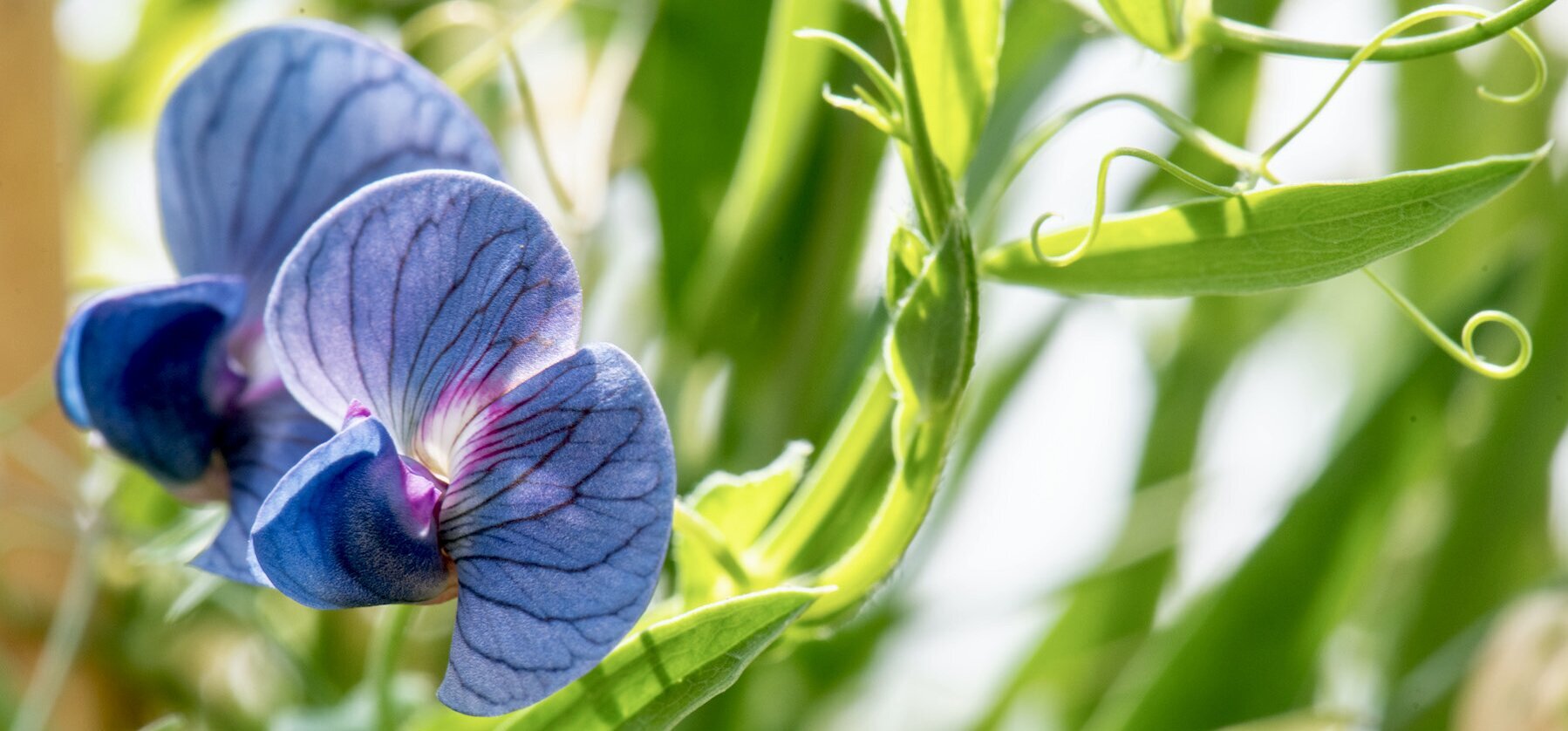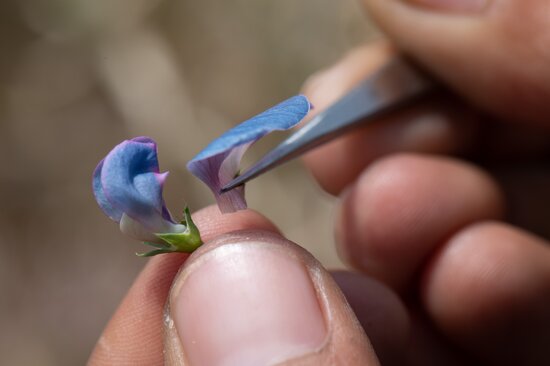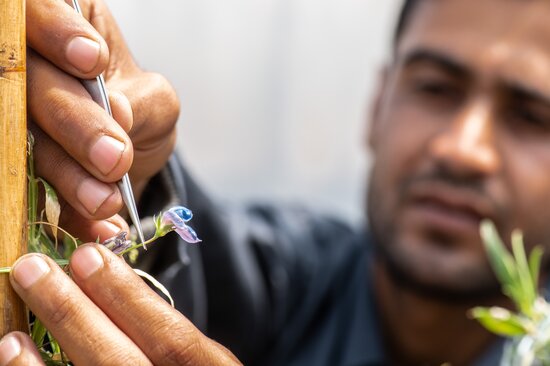Grasspea
The BOLD Grasspea Project
The BOLD grasspea project will enhance the grasspea diversity available to breeders, researchers, farmers and other users, with the focus on increasing the nutritional value of the crop and improving its agronomic characteristics. The aim is to develop new varieties based on elite lines derived from crop wild relatives through participatory evaluation. This will improve the food and nutrition security of the small-scale, resource-poor farmers who rely on the crop for food and livestock feed.
Why grasspea?
Grasspea (Lathyrus sativus L.) is versatile crop grown for food, feed and fodder in South Asia and sub-Saharan Africa and to a limited extent in Central and West Asia, North Africa, southern Europe and South America. It is grown mainly for food in Bangladesh, Ethiopia, India, Nepal and Pakistan and for feed and fodder in other countries. It is cultivated for its tolerance to biotic and abiotic stresses, ability to fix nitrogen, penetrating root system and high protein content and plays a vital role in sustainable farming systems. Increasing the cultivation of grasspea will contribute significantly to mitigating the impacts of climate change and minimizing the environmental footprint associated with increased food production.
However, grasspea has limitations as human food because it contains a neurotoxin, β-ODAP, that can cause paralysis and brain damage if too much is eaten over a long period.
Challenges
The main challenge with grasspea breeding is to develop varieties with low neurotoxin contents and good agronomic and nutritional properties. Grasspea displays characteristics such as late maturity, pod shattering, prostrate-spreading plant habit and indeterminate growth, all of which pose constraints on its cultivation.
Its productivity can also be seriously affected by the noxious weed broomrape (Orobanche sp.) and by aphids, which are among the most destructive insect pests on cultivated plants in temperate regions.
Building on the Crop Wild Relatives Project
The Crop Wild Relatives Project identified grasspea wild relatives with low levels of the neurotoxin and crossed these with cultivated grasspea varieties to begin the process of developing new varieties that are safer to eat in large quantities. More than 250 pre-breeding lines were advanced through “speed breeding” and multiplied for on-farm testing. The BOLD Project will build on these pre-breeding efforts in Bangladesh, India and Nepal and will include Bhutan and Sudan in capacity building of researchers.
Project partners
- The International Center for Agricultural Research in the Dry Areas (lead)
- Pulses Research Centre at the Bangladesh Agricultural Research Institute, Joydebpur, Bangladesh
- Indian Institute of Pulses Research, Sehore, Madhya Pradesh, India
- Nepal Agricultural Research Council, Grain Legume Research Program, Khajura, Banke, Nepal
Activities
- Evaluate CWR- and landrace-derived grasspea lines from the Templeton and CWR-Project and integrate them into breeding pipelines
- Conduct participatory evaluations of pre-breeding lines with farmers
- Develop new varieties based on elite CWR-derived lines through participatory evaluation and make them available for use
- Characterize key genebank materials for the target traits by partner genebanks
- Develop new pre-breeding populations for the target traits and make them available to plant breeders and farmers
- Build the capacity of partners and farmers in germplasm management and participatory evaluation including experimental design, data collection and data analysis
- Make characterization and evaluation data available online.
Grasspea resources
Grasspea stories
- Laying the Foundations for Better Grasspea and Finger Millet, Crop Trust Annual Report 2022
- Breakthroughs in Breeding Grasspea and Finger Millet, Crop Trust Annual Report 2021
- Fast-Tracking Food Security Using Space Science, 7 April 2021
- Pre-breeding Work with Grasspea and Finger Millet Gets a Boost, 2 October 2019
- How Does a Toxic Grasspea Save Lives? 2 December 2014
Relevant publications
- Abdallah, F., Kumar, S., Amri, A., Mentag, R., Kehel, Z., Mejri, R.K., El Abidine Triqui, Z., Hejjaoui, K., Baum, M., Amri, M. 2021. Wild Lathyrus species as a great source of resistance for introgression into cultivated grass pea (Lathyrus sativus L.) against broomrape weeds (Orobanche crenata Forsk. and Orobanche foetida Poir.). Crop Science 61(1): 263–276.
- Das, A., Parihar, A.K., Barpete, S., Kumar, S., Gupta, S. 2021. Current perspectives in reducing β-ODAP and improvement of potential agronomic traits in grass pea (Lathyrus sativus L.). Frontiers in Plant Sciences 12:703275. https://doi.org/10.3389/fpls.2021.703275.




